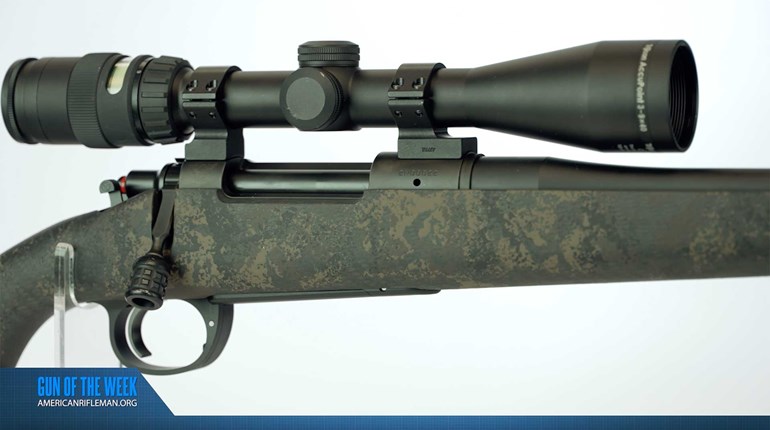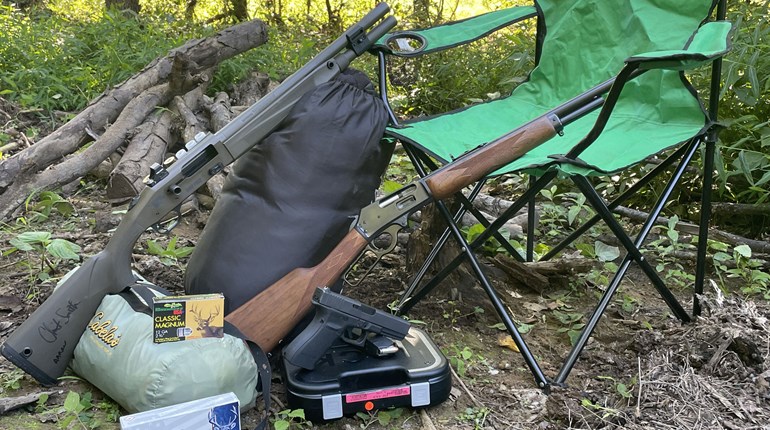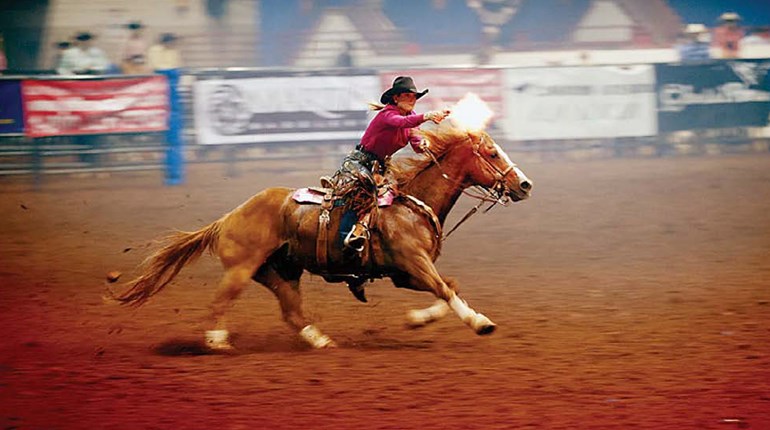
By the mid-1860s, Kit Carson was one of the most famous men in America. Over a 30-year career, his exploits as a mountain man, expedition guide, Indian fighter and military man were unequaled. Newspaper reporters hounded him for interviews when he passed through their towns. Novelists lionized him. Kids wanted to grow up and emulate him.
Yet his physical appearance was underwhelming. He had a physique that no one found intimidating. He was short—some said only 5-foot-6. He had no handsome features anyone noticed. And he was quiet and taciturn, speaking only when needed.
The future Civil War general William Tecumseh Sherman, who had heard about Carson’s derring-do, came to meet him in 1847, no doubt expecting to see a Herculean man. But upon seeing Carson, Sherman’s impression was anything but Herculean: “I cannot express my surprise at beholding a small, stoop-shouldered man, with reddish hair, freckled face, soft blue eyes, and nothing to indicate extraordinary courage or daring. He spoke but little, and answered questions in monosyllables.”
As if those deficits weren’t enough—Carson was also illiterate. Signing his name as “C. Carson” was the extent of his ability to write.

But Carson’s courage and daring were beyond reproach. Born in 1809 in Kentucky, his family moved to Missouri shortly thereafter, and at age 16, while apprenticed to a saddler, he ran away from home, seeking his own way in life, and ended up in New Mexico. There he befriended some trappers and began the arduous life of beaver-trapping, which was a dangerous but lucrative activity. He soon began venturing far afield—not just trapping but also exploring a vast region that stretched from New Mexico to Idaho. (In honor of his trail-blazing, many places have been named after him, most notably Nevada’s state capital, Carson City.)
Vulnerable to attacks by Indians and working mostly alone, a self-employed trapper had to be not only brave but resourceful. Thus, many a trapper often set his traps at night and hid himself during the day. He had to be a jack of all trades—gunsmith (in case his gun needed repair), blacksmith (if traps needed repair), cook, guide and medic. A minimalist when it came to luggage, he usually carried a blanket, cooking kettle, butcher knife, ax, and items essential for using and maintaining his gun, i.e., balls (bullets), powder, patch box, ramrod, flint, cleaning rod, etc. After all, trapping meant you would be in the woods—and often in unfamiliar woods—for weeks or months at a time. Men who ventured into the woods with shaven faces usually emerged, months later, looking like the missing link in human evolution.
And that is if they emerged at all. Besides Indian attacks, trappers risked starvation if their food ran out or if they failed to trap any animals (though the main asset was its skin, a beaver’s meat provided sustenance if no deer or elk were nearby). Finally, they often flirted with hypothermia as a result of setting and removing traps in cold streams during winter months (the months that yielded the best profits since beavers grew a thicker, more desirable fur).
Since Carson was illiterate, he dictated his memoirs years later. There he poignantly recollected the deprivations of trapping: “Perhaps, once a year, I would have a meal consisting of bread, meat, sugar, and coffee; would consider it a luxury.”
In fact, a mountain man’s daily dangers gave him little time to even think of luxuries. One day, hunting alone, Carson shot an elk. Hearing a noise, he turned around—and saw “two very large grizzly bears” coming at him. Having no time to reload, he dropped his gun and climbed up a tree. Fortunately the bears eventually left, with Carson “never having been so scared in my life.”
In 1833, during a trapping trip with a group of other men, they discovered their horses were stolen, and tracked the thieves to a Crow Indian encampment. Waiting until after dark, Carson and five men crawled into the encampment and reached the horses and released them. Then a dog started barking, waking up the Indians. All hell broke loose. Carson said, “We opened a deadly fire, each ball taking its victim. We killed nearly every Indian.” Carson, the short, quiet man, was no less capable of violence than his taller, louder compatriots.
But he was also the recipient of violence. In one incident, he and another trapper saw two Blackfoot Indian warriors hiding among trees, waiting for an ambush. Then one warrior took aim at Carson’s companion—and Carson shot him dead. That gave the other Indian the chance to fire at Carson, who didn’t have time to reload. The ball grazed Carson’s neck but penetrated his shoulder. It was bitter cold that night, but fearing of disclosing their presence, the trappers did not build a fire and slept on the snow. “I passed a miserable night from the pain of the wound,” said Carson.
It was such tribulations he experienced while traveling hundreds of miles during his years in trapping (1829-1841) that prepared him for the job that would ultimately bring him national fame. That job resulted from a chance meeting. In 1842, while on a trip to Missouri, he ran into a fellow passenger on a steamboat. John C. Fremont, an explorer from the U.S. Army, was looking for a guide for an expedition through the West. Carson was hired.
Eventually, Carson guided Fremont through three expeditions in the 1840s across the Rocky Mountain region; these expeditions mapped and promoted the Oregon Trail, which some 500,000 Americans eventually followed, seeking a better life out West. Fremont’s reports on the expeditions became bestsellers of the day, and references to Carson’s courage made him nationally famous. (Parts of the Oregon Trail existed before Carson and Fremont, but until their expeditions popularized it, the trail was considered a crapshoot into treacherous terrain.)

During the Mexican War (1846-48), Carson fought in the battle of San Pasqual, Calif. Hemmed in by Mexicans, the American soldiers were in dire straits and needed reinforcements. At nightfall, Carson and a soldier crawled 2 miles through three rows of Mexican sentries and walked barefooted some 25 miles until they reached the nearest American forces in San Diego—their feet blood-ridden due to prickly pear cactus and rocks they stepped on along the way. Thanks to Carson, the embattled Americans got reinforcements, thus preventing a catastrophic rout.
His ability to find his bearings and read nature’s signs—whether left by animals or humans—was unequaled among his peers. An Army major who knew him said Carson was “the best tracker among white men in the world.”
Of all his activities, the most controversial was his involvement, during 1863-64, in the removal of Navajo Indians from northeastern Arizona to a reservation called Bosque Redondo, near Fort Sumner in New Mexico—some 400 miles away. It became known as the Long Walk, since Navajos were forced to walk that unconscionable distance, and several hundred Navajos died on the way. However, historians who have fair-mindedly studied it believe that Carson only reluctantly followed the orders from his Army superiors and possibly even quietly circumvented some orders that mandated outright brutality. After all, it was his superiors who had built the reservation in the first place—not he.
Nevertheless, given the liberal anti-traditional nature of history debates today, some commentators have found it too easy to denigrate him as a racist frontiersman. But that is a ludicrous accusation. Carson’s first wife was an Arapaho Indian woman, with whom he had two children. His second wife was a Cheyenne Indian woman. His third wife was a Hispanic woman, with whom he had eight children. A racist would not enter into interracial marriages, much less sire mixed-race children. Enough said.
For firearm enthusiasts, a regrettable legacy of many frontiersmen is that no firearm verifiably owned by them has survived (which, for instance, Daniel Boone fans have soberly learned over the decades). But Carson’s firearm legacy fares better. It appears that at least two hunting rifles with a verifiable ownership history (what collectors call provenance) traceable to Carson have survived.
Of these, the one most often cited is a .54-caliber Hawken rifle with a 31-inch octagonal barrel currently at the Montezuma Masonic Lodge in Santa Fe, N.M. It is a late-1850s manufacture, and was acquired by the Lodge in 1868 when Carson died. It is not known how often or where he used it, but the gun’s date precludes his use of it during his trapping years (1830s) or on the Fremont expeditions (1840s). The other rifle is also an 1850s Hawken, but .56 caliber with a 36-inch barrel, and is in private hands. Hawken rifles were among the best-made American guns in Carson’s day, and they had a devoted clientele especially among mountain men.
Carson died in May 1868, probably due to lingering internal injuries he had suffered after a fall from a horse in 1860. He is buried in Taos, N.M., where he had lived for many years. His home is now a museum, a small memorial for a man who played a large role in the settlement of the American West.

Today, perhaps the most visible—and visitable—reminder of his rugged outdoor legacy is a site near Guernsey, Wyo. It is a well-preserved sandstone section of the 2,100-mile-long Oregon Trail; this section still shows the ruts created by the wagons of men and women who headed West for a better life, following the route mapped by the expeditions that Carson guided. To walk here is to walk in the footsteps of Carson.
John Colter: America's First Mountain Man
About 25 miles east of Billings, Mont., along Interstate 94 you can see a huge rock called Pompey’s Pillar (National Monument), situated on the Yellowstone River. Historically, this 150-foot-tall rock was a conspicuous landmark for trappers heading deep into beaver habitat. Foremost among those trappers was John Colter, whose travels on the Yellowstone—on foot and by canoe—brought him by this rock many times.
A respected member of the Lewis & Clark Expedition, Colter became a trapper and explorer who traveled hundreds of miles on foot in the Rocky Mountain region, and was the first American to discover what is now Yellowstone National Park. Put simply, he is considered America’s first mountain man.
Nevertheless, almost nothing is known about his early life. He was presumably born in the early 1770s—but no one knows the date. It is said he was born in Stuarts Draft, Va. (near Staunton).
Fortunately, some of the people who knew him—including the two famous captains, Meriwether Lewis and William Clark—wrote about his actions in various situations. Thus, we know at least a few things about him.

His hunting skills were evident throughout the expedition. For instance, in September 1804, near today’s Yankton, S.D., Colter was sent to find a crew member who had been missing for days. While looking for him for a week, Colter downed a jaw-dropping buffet of Midwestern game to help feed the crew—a bison, an elk, three deer, a wolf, five turkeys, a goose and a beaver. All this while the missing crew member, despite having a gun while being lost and hungry for days, had killed only a single rabbit.
By the time the expedition reached the Pacific Ocean in November 1805—a year and half after leaving St. Louis—the two captains had developed a profound admiration for Colter’s skills. That admiration led them to a unique decision on the return journey. In August 1806, in North Dakota, the expedition met two trappers going up the Missouri River in search of beaver. Colter wanted to join them. The two captains gave him permission—and made it clear to the remaining crew no one else would be granted that privilege.
So, Colter headed back upriver with his two new companions, toward the Yellowstone River, and eventually to its tributaries, where beavers were aplenty. The next year, he began working for a fur trader and, hoping to promote trade with Indian tribes, undertook a solitary trail-blazing trek of several hundred miles across southern Montana and northwestern Wyoming, and became the first man of European descent to see the timeless scenery of the Yellowstone region. During this months-long trek in the Rockies, he subsisted on local game, trapped and fended for himself.
Colter died in 1812, at perhaps 40 years old, and left many unanswered questions. One of those concerns his firearms.
The “official” rifles of the expedition were 15 special-order guns. It was previously thought they were Model 1803. Today it is believed they were “1792 contract” rifles (.49-caliber flintlocks made under government contract in 1792-94) specially modified, perhaps to .54 caliber, with barrels shorter than 42 inches to be more manageable in a cramped keelboat.
Given Colter’s outstanding skills, the captains almost certainly let him use one of these special-order rifles. And it is possible he carried that gun when he left the expedition to pursue trapping.

Colter’s most enthralling adventure was an escapade—as in escape. In 1808, when he and a companion were trapping near today’s Three Forks, Mont., they were captured by the notorious Blackfoot Indians. They killed his companion and stripped Colter naked.
Then, surrounded by young warriors, the Indian chief motioned Colter to move on. He was to run for his life while being chased by the warriors. The chief allowed Colter a head start of a hundred or so yards, then they let out a war whoop and the warriors sprang into a chase. Colter bolted, running so fast that he bled through his nose. Then one warrior, closing in on Colter, tried to spear him, but fell down in the process—and Colter seized the spear and stabbed the warrior.
Having run several miles, with other warriors chasing him, Colter reached the Madison River and, still naked, jumped into the cold water and swam under a pile of driftwood lodged against the riverbank. Breathing through a small opening among the debris, he lay totally quiet. The Indians walked all around him but did not see him. Over the next 10 days, he hiked more than 200 miles to reach safety at a trading post located about 30 miles east of Pompey’s Pillar. In Western history, this amazing escape is dubbed “Colter’s Run.”





































